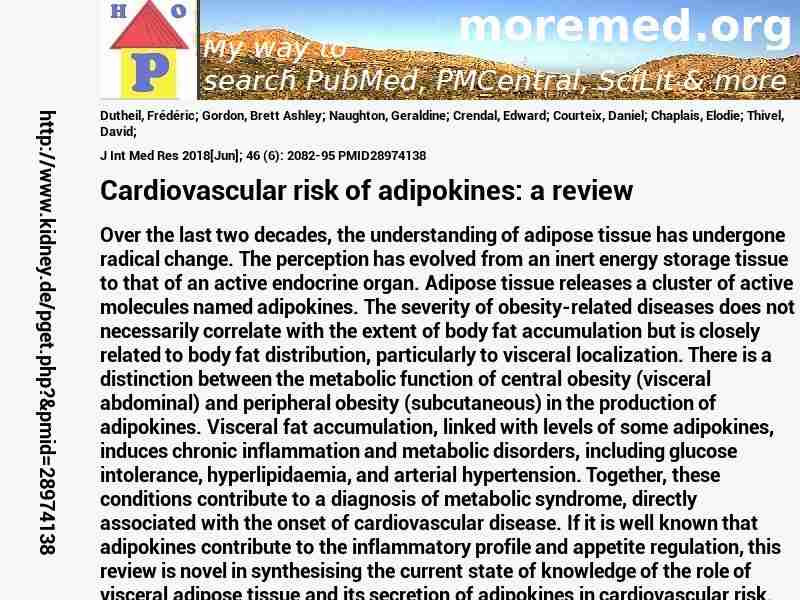
|
10.1177/0300060517706578
http://scihub22266oqcxt.onion/10.1177/0300060517706578

C6023062!6023062!28974138
 free free
 free free
 free free
|  
Warning: imagejpeg(C:\Inetpub\vhosts\kidney.de\httpdocs\phplern\28974138.jpg): Failed to open stream: No such file or directory in C:\Inetpub\vhosts\kidney.de\httpdocs\pget.php on line 117
 J+Int+Med+Res 2018 ; 46 (6): 2082-95 J+Int+Med+Res 2018 ; 46 (6): 2082-95
Nephropedia Template TP
gab.com Text
Twit Text FOAVip
Twit Text #
English Wikipedia
|
Cardiovascular risk of adipokines: a review #MMPMID28974138Dutheil F; Gordon BA; Naughton G; Crendal E; Courteix D; Chaplais E; Thivel D; Lac G; Benson ACJ Int Med Res 2018[Jun]; 46 (6): 2082-95 PMID28974138show ga
Over the last two decades, the understanding of adipose tissue has undergone radical change. The perception has evolved from an inert energy storage tissue to that of an active endocrine organ. Adipose tissue releases a cluster of active molecules named adipokines. The severity of obesity-related diseases does not necessarily correlate with the extent of body fat accumulation but is closely related to body fat distribution, particularly to visceral localization. There is a distinction between the metabolic function of central obesity (visceral abdominal) and peripheral obesity (subcutaneous) in the production of adipokines. Visceral fat accumulation, linked with levels of some adipokines, induces chronic inflammation and metabolic disorders, including glucose intolerance, hyperlipidaemia, and arterial hypertension. Together, these conditions contribute to a diagnosis of metabolic syndrome, directly associated with the onset of cardiovascular disease. If it is well known that adipokines contribute to the inflammatory profile and appetite regulation, this review is novel in synthesising the current state of knowledge of the role of visceral adipose tissue and its secretion of adipokines in cardiovascular risk.�
  
DeepDyve
Pubget Overpricing | 
|